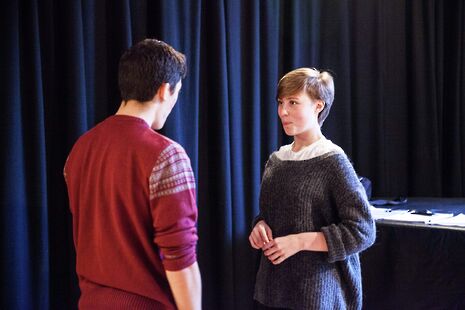Preview: You Can’t Take It With You
Stella Pryce chats with the team behind this 1930s farce

Farcical comedy is a genre not unfamiliar to Cambridge; indeed the slapstick yet intelligent sketches of the Footlights are world-renowned. Thus, when confronted with a play like this, one instantly wonders – what’s new? What does this play offer that Cambridge students have yet to see? While this may seem a daunting prospect for an entirely fresher cast, Frank Martin and Enrico Hallworth (directors of You Can’t Take it With You) are not fazed. Martin is quick to tell me, “It’s incredibly exciting and... such a unique opportunity.” And Hallworth surely adds, “it’s the way Cambridge works, everything is fast paced... but that is what makes it so exciting!”
The Cambridge theatrical scene can be terrifying. As a first year I have already spent hours scroling through the never-ending audition listings. It is clear that the team behind You Can’t Take It With You appreciate the sheer newness of their environment; Heather Fantham (lead cast member) notes that “being confined to such a short amount of time means you have to work so much faster”.
Co-director Frank Martin agrees, “It’s a massive step up but I think that’s what motivates you to put the effort in. The ridiculously high standards of Cambridge theatre are what makes you try so hard to make it good!”
The play takes place inside the house of an eccentric 1930s New York family. In tone the piece lies somewhere between extreme comedy, humility and joy. Martin tells me, “I think that what we are trying to convey both through the humour and the moments of greater profundity is that sense of joyfulness that exists in the household… The message behind it... is about finding that joy in life”.
Continuing our discussion of comedy, Hallworth notes, “I think a particular challenge with this show is keeping the humour really fresh, because at this point it is quite dated and the risk with any comedy when you have rehearsed it many, many times is for the jokes to become a bit stale.”
I ponder over the highly specific setting of the play and wonder how they intend to bring it to life. For Martin, “the text and the setting is provided by the language itself.” This does, however, include the use of space, set and costume; he tells me how excited the team were when they received the first mock-up design of the set. Their main concern, he tells me, was that the aesthetics should reflect “the quirky chaos of the play itself”.
Despite the trials and tribulations of the Cambridge theatrical scene, it is clear that the entire cast of this play are hugely enthused by the opportunity. It was evident in rehearsal that the subtleties of the farce genre are to be explored in depth, with an understanding of character and comic timing. This performance will be an extremely exciting and fresh piece of student theatre, definitely one to watch out for.
 Comment / Plastic pubs: the problem with Cambridge alehouses 5 January 2026
Comment / Plastic pubs: the problem with Cambridge alehouses 5 January 2026 News / Cambridge businesses concerned infrastructure delays will hurt growth5 January 2026
News / Cambridge businesses concerned infrastructure delays will hurt growth5 January 2026 News / New movement ‘Cambridge is Chopped’ launched to fight against hate crime7 January 2026
News / New movement ‘Cambridge is Chopped’ launched to fight against hate crime7 January 2026 News / AstraZeneca sues for £32 million over faulty construction at Cambridge Campus31 December 2025
News / AstraZeneca sues for £32 million over faulty construction at Cambridge Campus31 December 2025 Interviews / You don’t need to peak at Cambridge, says Robin Harding31 December 2025
Interviews / You don’t need to peak at Cambridge, says Robin Harding31 December 2025









